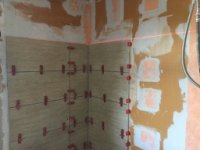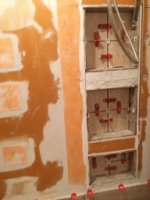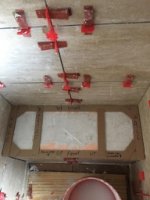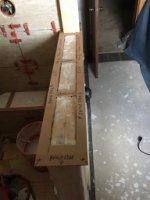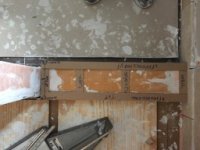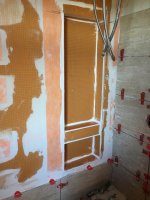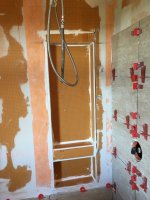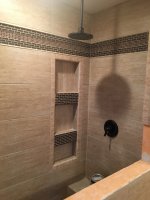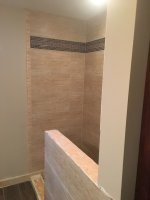Michael Kellough said:What is the goo used to seal patches in the wall?
I'm not Tom, just answering your second question since I've used Kerdi a fair bit as well. Kerdi is applied with thinset (example if you are applying the membrane to cement board). When you overlap or use the thin bands of membrane (e.g. at the corners of the pan), also thinset. Or, in Tom's photos, the patches of Kerdi membrane on top of the Kerdi-board to cover the screws are also applied with thinset. This works because the membrane is kind of a fleece-like material sandwiching the impermeable core.
Schlüter also sells an [expensive] silicone caulk called Kerdi-fix for use on drain flanges, metal trim, pipe and valve seals, etc.

